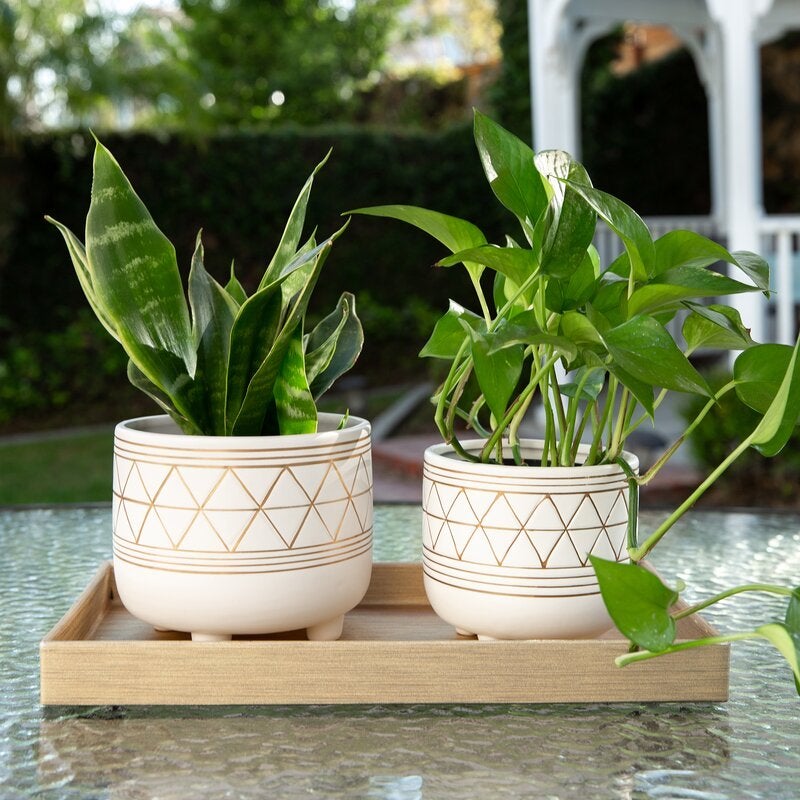Plants are a great way to brighten up a dreary dorm room, but not all plants are meant to thrive in your small space! As a trained florist, I have learned the basics of common houseplants, and which ones are perfectly low-maintenance, and can survive in low light. Here are some staple plants that will flourish in even the dingiest of spaces.
- Pothos
-
Pothos is such an underrated plant simply because they are so easy to take care of. Also known as “The Devil’s Ivy,” pothos is a cute little ivy plant with green and white heart-shaped leaves. They are very resilient and don’t need much attention to grow a ton. They only need to be watered every once in a while when the soil is dry. You’ll know to water your plant when you notice leaves might start to turn yellow or look a little shriveled. As long as you water it at this point, your pothos will live to tell the tale! Both direct or indirect sunlight is perfect for them, but they don’t do quite as well in direct sunlight — not that a dorm has much of that anyway. However, if you choose a variegated plant (one with lots of white stripes), keep it near the sun or else your plant might lose its pretty variegation!
Pothos is toxic to humans and animals if ingested, and may cause skin irritation.
- Snake Plant
-
Shown on the left of the picture above, the snake plant is a little leafy plant that has a ton of different varieties, but they are all beautifully simple to take care of. They grow best in bright light, but will survive in dimly lit areas as well! It must only be watered if the soil feels dry — it can go up to two months without water in the winter, and two weeks during the summer. Overwatering can cause root rot, which is not good! Keep the plant in a relatively warm area; colder temperatures (below 50 degrees Fahrenheit) can hurt it.
Snake plants are also toxic to cats and dogs.
- Lucky Bamboo
-
Lucky bamboo is the perfect addition to your desk. It is incredibly easy to take care of, and is super cute! It only needs to be watered about once a week. And to water it, you literally just pour as much water as your pot will allow. However, filtered water or tap water that has been left out for a couple of hours should be used to water it, as chlorine in normal tap water could hurt your plant. Keep it out of direct light and feed it a diluted solution of plant food every couple of months to keep it healthy.
While lucky bamboo is a very low-maintenance plant, I will warn you that it is a bit more expensive than the other plants in this list. If it’s the right plant for you, though, go for it! Lucky bamboo is also toxic to cats and dogs, but not to humans.
- Spider Plant
-
Spider plants are extra cool because if you grow them for long enough, they will grow little spiderettes! They require bright, indirect light, meaning a spot where light from the window is obstructed. They like to get watered, so keep the soil moist but not soggy. Some spider plants even like to dry entirely between waterings. You just need to find out what watering pattern your plant responds best to! They also like cooler temperatures (around 55 to 65 degrees Fahrenheit).
These plants are also non-toxic to humans and animals!
Not only can these plants survive in low light, but they are also very low-maintenance and perfect for beginner houseplant owners. So, if you’re looking for easy ways to liven up a little space with little light, look no further than these beautiful plants!
Can’t get enough of HC UMass Amherst? Be sure to follow us on Instagram, listen to us on Spotify, like us on Facebook, and read our latest Tweets!




